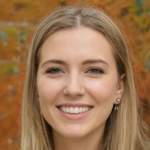How To Guide: Calculate Contribution Margin
When looking at the financial status of your business, it is easy to be overly simplistic and merely assess whether or not you are turning a profit. If you are, indeed, turning a profit, you may become complacent and simply stop there. However, what works today might not always work tomorrow. There are, however, things that you can do right now to improve your business as it grows. If you are a business that produces physical products in particular, it is intrinsic that you look at your contribution margin, which will help your business to continue to flourish.
You may be wondering what exactly a contribution margin consists of. Put in the most basic terms, a contribution margin is the sales revenue of the business after variable costs are removed. The ultimate target is to reduce these variable costs by analyzing them and making any necessary adjustments. It is a method that all great managers employ.

The Formula for Contribution Margin
Below you will find the formula for calculating the contribution margin. It is quite simple once you familiarize yourself with it.
Contribution Margin = Net Sales Revenue – Variable Costs
OR
Contribution Margin = Fixed Costs + Net Income
Net Sales
When describing net sales, they are the company’s gross sales prior to the subtraction of other costs such as discounts, allowances and returns. They are the primary figures assessed by analysts.

Variable Costs
Variable costs perform exactly as they are termed, they vary each month according to your business’s requirements. They consist of all the expenses acquired by a business from both production and sales. To illustrate an example, if you were running a cupcake business, and one month you had an influx of sales which was higher than the average, you would need to purchase more ingredients to increase production.
To list some examples of variable costs, consider the following:
Raw materials - What you need to produce the items in question.
Production supplies - Things which ensure fluidity in production, such as oil to fuel machines.
Labor costs - The salary paid to workers.
Shipping costs - The amount of money it takes to ship the items to buyers.
Also read: Can I Pay Off My Mortgage Early?
Fixed Vs Variable Costs
Variable costs seem quite straightforward when we put them in simplistic terms as we have above. To reiterate, variable costs vary each month depending on sales and production. If this is how variable costs operate, then how do fixed costs work? Like variable costs, they are also straightforward once you have a grasp on the definition. Simply speaking, fixed costs are, well… fixed. They are costs which you honor as a business each and every month. These would consist of things such as bills, subscriptions and rent. They must be paid regardless of how much your company sells each month.
The manner in which you determine which costs are variable and which are fixed will depend on the nature of your business. For example, a cake making business might fluctuate a great deal in terms of cost when it comes to electricity, depending on how much the oven is used. As stated, these factors will be highly personal to the business itself.
Also read: What is a Bridge Loan?
The Importance of High Vs Low Contribution Margins
When analyzing the price of selling a product, contribution margin is integral. Essentially, the higher the contribution margin, the better. If your contribution margin is high, it means that the profit you derive from your products is larger than the cost it takes to produce them. Fixed costs are normally considerable, and so the higher the contribution margin, the more profit you are left with after fixed costs are removed.
A low profit margin suggests that whatever is being produced is not very lucrative, and so it might be time to reevaluate and consider dropping lesser performing products. Ultimately, it is important to consider contribution margins in relation to your products as it gives you a more detailed evaluation of how each individual product is performing. There are, however, some instances where further analysis will need to be applied beyond this formula.
Additional Useful Formulas
Contribution margins can be tricky to decipher due to their subjectivity. Ultimately, business owners are just left with a dollar sum without any extra information. This is why it is important to also consider other formulas when looking at overall contribution margins. These will help to ensure that business owners are looking at the full picture in a more objective manner.
Also read: Checklist For Moving Into Your New House
Per Unit Contribution Margin
This formula tells you the amount of money that you will have gained from a sale. The per unit contribution margin is what you are left with once you’ve removed the (variable) cost of production.
The formula is demonstrated below:
(Product Revenue - Product Variable Costs) / Units Sold = Contribution Margin Per Unit
In order for the formula to work, you have to bear in mind that you’re looking at a particular product or line with its variable costs included. This will give you a far more accurate picture rather than simply gazing at an income statement.
Ratio of Contribution Margin
Unlike the formulas we’ve previously discussed, the ratio of contribution margin takes dollar sums out of the equation. Instead of observing sales volumes, business owners can simply compare the product margins alongside one another.
Take a look at the formula below:
Contribution Margin Per Unit / Sales Price Per Unit = Contribution Margin Ratio
Instead of merely looking at figures, this formula makes it possible to compare your products in a timely and efficient manner, cutting out any unnecessary difficulties.
Also read: How to Apply For a FHA Loan?

Making a Profit
Whether you are employing the services of an accountant to conduct your business formulations for you, or are simply doing it yourself, it is undeniable that looking at contribution margins are fundamental in business growth. Once you have a grasp of it, you can then take the necessary steps (increasing price, reducing costs, operation modifications) to allow your business to flourish.
A free paystub generator is a great, affordable way to create custom paystubs. So check ours out today!
Also read: Pay Rent With a Credit Card















